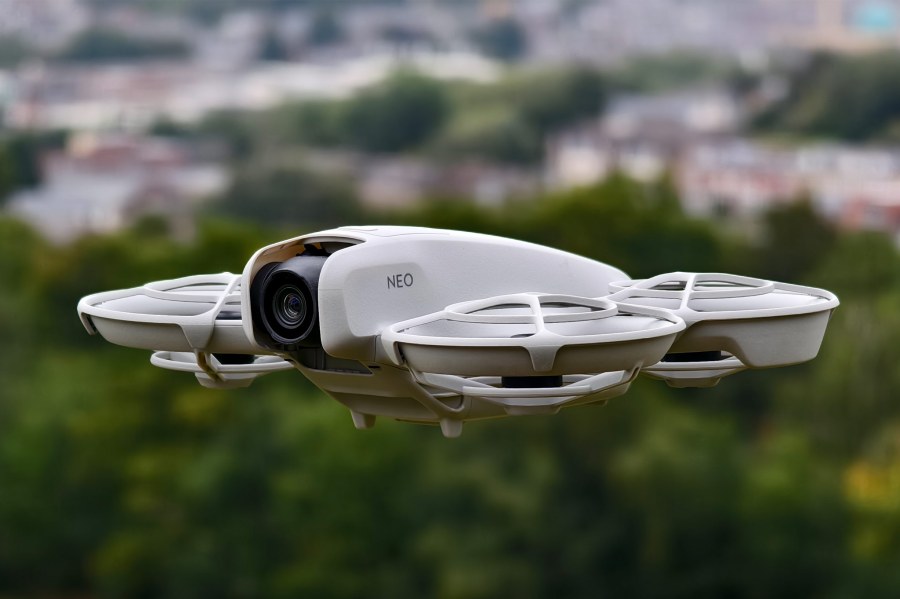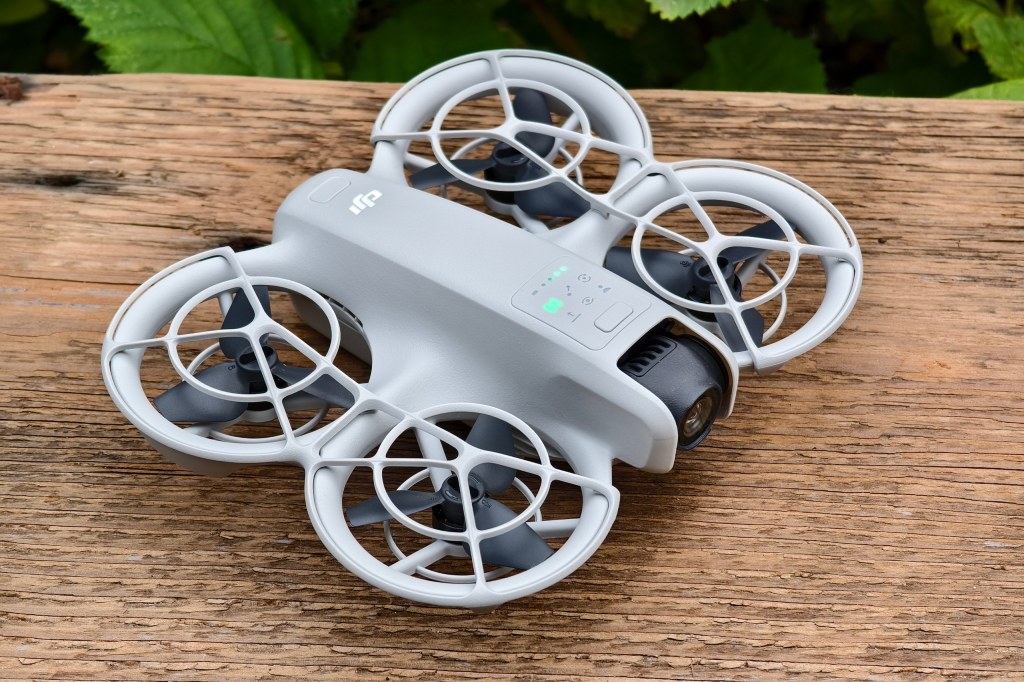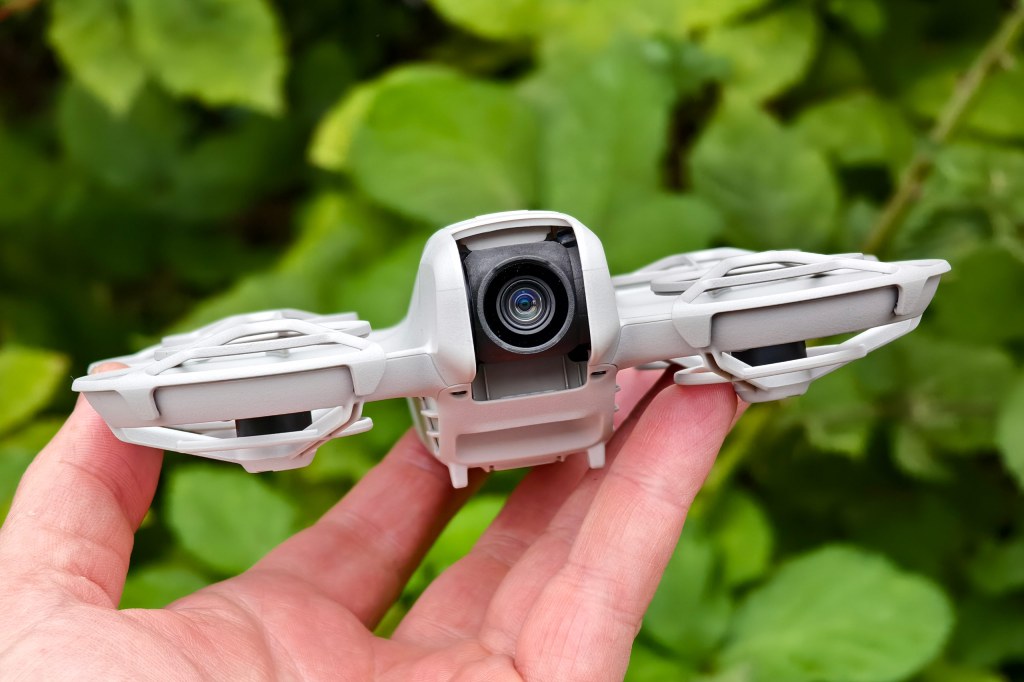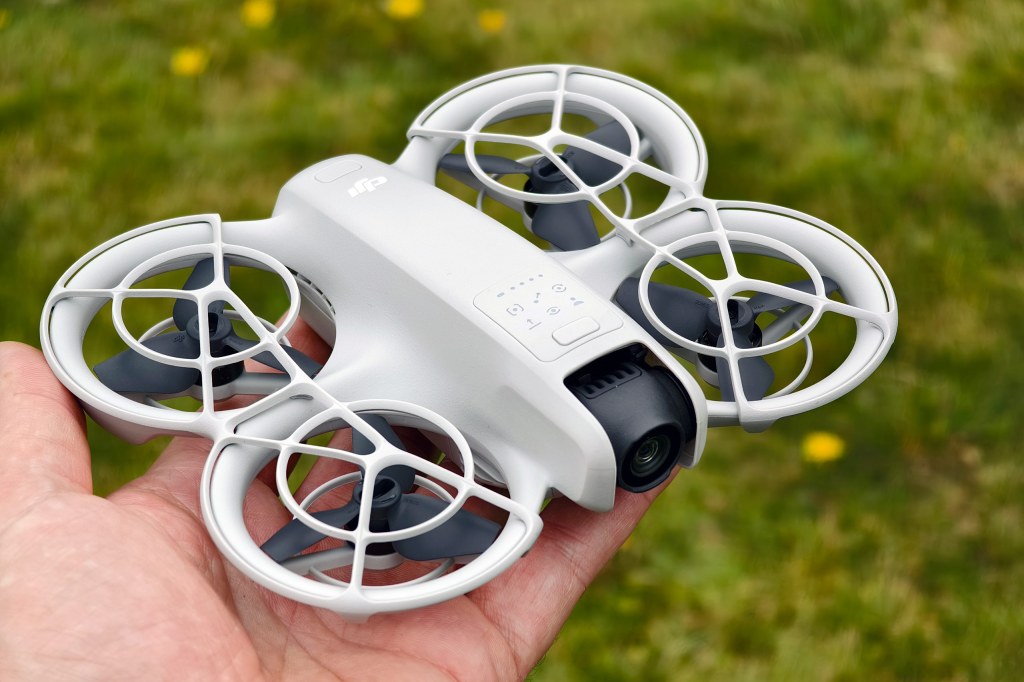Amateur Photographer verdict
The DJI Neo offers amazing value for money, with a gimbal, 4K video, 12MP stills and is extremely easy to use, but image quality could disappoint if you don’t have great weather.- Amazing value for money
- Stabilised photo and video
- 90° downward angle enables true overhead photography/video
- 22GB built-in storage
- Flight time quite short without extra batteries
- Storage can’t be expanded (no MicroSD slot)
- Image quality mixed (suffers in poor light)
- Doesn’t support raw shooting
The DJI Neo is a brand-new drone with camera, from DJI, the number 1 drone manufacturers in the consumer space. Priced at just $199, €199 or £169, the new drone sits above the DJI Tello, a budget $100 drone for kids, and below the DJI Mini series. The small size and low weight of 135g (officially) means you don’t need a licence to use it.
This makes it amazing value for money for a 12MP, 4K camera. I mean, it even gives standard 4K cameras a run for their money, with Canon, Sony, other 4K cameras often costing much more than this. (DJI Pocket 2 is £279, GoPro Hero12 Black is from $/£300+ etc)
At a glance
- $199 / £169 / €199 drone, no controller
- $289 / £299 / €349 Fly More combo (RC-N3 / RC151)
- 12MP f/2.8, 13.9mm equivalent (1/2inch image sensor)
- 1-axis GIMBAL – 90° down, 60° up
- 4K 30p video recording (4:3/16:9 with EIS)
- 17/18min flight time (with/without guards)
- 131g / 136g without/with guards
- 8m/s wind resistance (Level 4 wind)
Features
The DJI Mini 3, DJI Mini 2 SE, DJI Mini 4K are no longer the cheapest drones available from DJI, with the new DJI Neo now taking the spot as their cheapest 4K capable drone, and we expect the non-folding design means cost and weight can be optimised. It’s also worth noting that the other drones mentioned offer more axis of movement and stabilisation compared to the DJI Neo’s single axis gimbal.
The Neo can take 12MP stills photos (4:3 or 16:9) and records 4K video, again, at the default aspect ratio of 16:9 or 4:3 for later cropping. However, if you do record 4:3 video, then electronic image stabilisation (EIS) is not available.
The lens sits on a 1-axis gimbal, with 120/120° movement, which you can select 90° down, and 60° up. It also has an f/2.8 aperture, uses a 1/2inch sensor, and has an ISO range of 100 to 6400. With an f/2.8 aperture, and relatively small sensor size (compared to the DJI Mini 3), you’re going to want good light for the best results.
The drone comes with top propeller guards pre-installed. However, these can be removed for slightly extended flight times, and the design of the drone means that the propellers are protected underneath and at the sides as standard; even with the top guards removed.
There are no manual photo controls, with photo options being very minimal (43, 16:9 as mentioned), and the only option being JPEG shooting.
Video controls and options include the choice between H.264 and H.265 encoding, and frame rates, with 30, 50, and 60fps available at 1080p, and 30fps available at 4K. Electronic image stabilisation can correct up to +/- 45°, meaning video footage will look stable, even in strong winds.
Beyond this, there are very few controls, with the ‘Auto’ flight modes being the most interesting options for video. If you’ve seen the range of controls on more expensive drones like the DJI Mini 3, then you might be a little disappointed.
However, the target market for this drone is more for people who want to try their first drone, and have it be as easy to use as possible, without necessarily working too much about outright image quality, and more advanced controls.
To adjust settings you’ll need the DJI Fly app on your phone, and it’s recommended you set this up at home with a good Wi-Fi or internet connection. You may also find there’s a firmware update available for the drone, which needs to be installed before it flies.
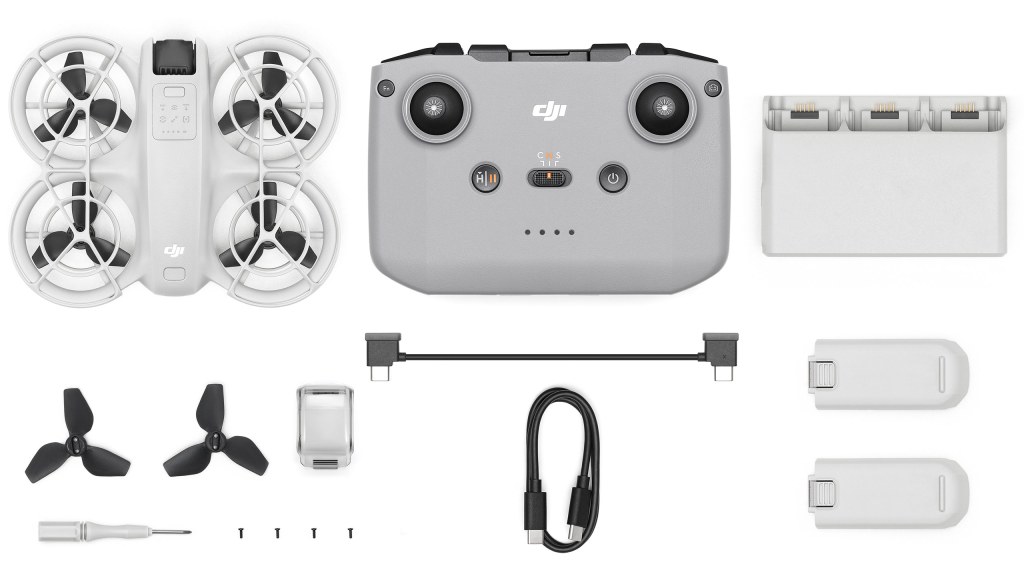
The Fly More Combo includes:
- 3 batteries total, battery: 1435mAh
- New DJI Neo 2-way charging hub (USB-C charging)
- DJI RC-N3 Remote controller (holds phone, charges etc) 2600mAh, USB-C, 3.6V 9.36Wh
The DJI RC-N3 (RC151) offers easy control, as well as quick buttons to get the drone “Home” when needed. You can select between C (Cine), N (Normal), and S (Sport) flight modes. It looks a lot like the RC231 controller with a top front-left dial to adjust the angle of the gimbal, and a shutter/record button front-right. The joystick controls can be unscrewed and stowed neatly in the bottom.
Shooting and video modes
The “Manual” mode is a manual flying mode, rather than a manual photo/video mode, where you manually control the drone, where it flies and how fast it flies.
There are a range of automated modes, all of them record a video… these are:
- Follow (Tracking)
- Dronie (flies backward and ascends)
- Circle (circles around the subject)
- Rocket (drone ascends with the camera pointing downwards)
- Spotlight (drone rotates with subject within the frame)
- Direction track (tracks the subject in the frame)
You can find more details on these modes, and the DJI Quickshots in this Introduction to QuickShots via DJI Fly.
Controlling and flying the drone, you can simply switch the drone on, and use it without connecting it to a phone or remote controller. Switch it on, then select the mode you want to use (using the buttons on top), and press/hold the button till it activates.
You can connect the drone to your phone and control it directly from the DJI Fly app, these gives a range of roughly 50m.
If you have the RC-N3 controller, you can fly the drone ‘headless’ i.e., without connecting to your phone, or you can use the RC-N3 controller with your phone in combination. This gives a video transmission distance of 10km (although restrictions may limit your flight distance).
Another way you can fly the drone is with RC and DJI Goggles 3 for FPV use. With the RC Motion 3 additional aerobatics are available.
Video audio has often been an issue when recording footage from a drone, but DJI let you use an external microphone or the mic on your phone. The app will automatically cancel out the noise of the drone if it is nearby. The results are impressive.
Performance

The 12MP camera does a reasonable job and gives the best results in bright sunny conditions. It struggles in low-light conditions with noise becoming an issue, and it also struggles with dynamic range, for example if the sun is in the frame.

If you just use the images on social media or on the web, and don’t look at the pixels in detail, then you should be relatively pleased with the results – as in, they’re good enough, but not amazing. It’s also worth taking a few shots, as some come out sharper than others, most likely due to movement when flying.

Video performance
What’s most impressive is how stable the footage is, even with the drone in the air, in windy conditions. It’s also impressive how you can use the phone’s microphone, and the noise of the drone will be completely removed.
Video quality is reasonable; however, it doesn’t really compare to a high-quality 4K camera when looking at the pixel level detail.
Verdict
There’s never been a more wallet friendly, yet capable, DJI drone, with 4K video, and 12MP photos, and the ease of use make this a really easy drone to pick up and start using. The design and built-in protection for the blades also mean that it’s likely to survive being used by beginners as well.
Yes, you could buy the Tello Ryze (powered by DJI) at roughly $100/£105, but you’re getting a fixed 5MP camera, and for just a little bit more, you’re getting a significantly better drone.
The Mini 2 SE was £379 in fly more combo, £279 on its own, this new drone is £169 on its own, or £299 with the fly more kit. However, it’s worth noting that the Mini 2 SE and Mini 2 4K offer longer battery life per battery (31 minutes max), compared to 18minutes max with the Neo. You’ll most definitely need to stock up on extra batteries, unless you plan to shoot for a short time.
For those that don’t want more manual controls or raw shooting, but just want an easy to use, entry-level drone that can capture some great looking video, the DJI Neo is a great choice.

More pictures of the DJI Neo in action:

